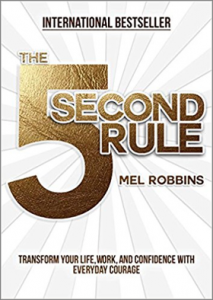
Let’s just get this out of the way: I don’t know anything about hacking. I’ve never hacked anything in my life, unless you’re describing my golf swing, or you count using a Game Genie to cheat at Sega Genesis back in the early ‘90s.
In general, I find terms like “life hacks” and “growth hacking” to be… well, hackneyed.
But you know what? Blog titles that include “hacks” — or other strong and compelling descriptors such as “surprising” or “critical” — have a greater tendency to gain viral traction. Sometimes a simple data point like that can be the springboard you need to uncover inspiration.
Which brings us to the purpose of today’s post.
Here at TopRank Marketing, we have an insanely talented Content Team. Legitimately some of the best writers and strategic thinkers I’ve ever had the pleasure of working alongside. But even these awesome pros are not immune to the occasional creative rut or swoon in productivity. It comes with the territory.
Recently the team came together to discuss some of our personal methods for overcoming content creation slumps and getting back on track when we’re dragging. I figured I would share some of the most salient pointers to come out of that meeting here, so other marketers can benefit and maybe adopt a few of them during their own periods of stagnation.
Hacks, insider tips, pearls of eternal wisdom — whatever attention-grabbing name you’d like to apply, I just hope you find these practical tips helpful in enhancing your productivity and elevating your content marketing success. (And feel free to comment with your own if you have tricks that work for you.)
#1 – Embrace the 5-Second Rule
 Last year, Mel Robbins published a book called “The 5 Second Rule: Transform your Life, Work, and Confidence with Everyday Courage.” The premise behind this guide to conquering self-doubt and procrastination is rooted in psychology.
Last year, Mel Robbins published a book called “The 5 Second Rule: Transform your Life, Work, and Confidence with Everyday Courage.” The premise behind this guide to conquering self-doubt and procrastination is rooted in psychology.
Basically, the crux is that because our brains are wired to avoid risk, we are innately predisposed to abandon many ideas and plans almost as quickly as they arrive.
Robbins challenges us to overcome this inclination by forcing ourselves to take some sort of action to move an idea forward within five seconds of the thought crossing our consciousness. It can be small and it doesn’t always have to lead anywhere. But it’s all about getting past your initial misgivings and, in some way, turning an idea from concept into reality.
So, next time the notion of a blog angle passes through your head, take the step to jot down a note, or even a loose outline. When you’re struck with the spark for a content campaign, but not quite sure about it, discuss it with a colleague or at least record a quick voice memo on your phone.
Basically, stop saying “later” and start saying “now.” By following this approach, you’ll find yourself with a whole lot more to work with, and it might just be that a passing fancy you’d have otherwise pushed out of mind turns into something great.
Stop saying “later” and start saying “now” when an idea crosses your mind. – @NickNelsonMN #ContentCreation #ContentMarketing Click To Tweet
#2 – Start with Your Conclusion
A classic writing tip from fledgling novelists is to draft the ending of a story first, and then work your way up to it. This same advice can be aptly applied to any content writer who is struggling to get a piece off the ground.
When I’m sitting down to write something new, I frequently find that getting started is the toughest part. You need a strong, compelling introduction, and in many cases can’t proceed until you’ve got one worked out. Another issue can be that once you’ve surpassed that initial hurdle, you start wandering and get sidetracked from the main points you’re trying to make.
Writing your conclusion before anything else can remedy both of these issues. Since it’s always smart to have the beginning and ending of a post tie together, you might find the pathway to your intro by taking this approach. And as you progress through the drafting process, you’ll always know exactly what the end destination is.
#3 – Keep a List of Recent, Authoritative Statistics
Sometimes, statistics can provide the backing we need to substantiate a point. But finding the right one isn’t always a quick or easy task. Getting bogged down in research is often one of the primary culprits in waning productivity.
If you have a team of writers on hand — particularly ones who cover similar topics or niches — it can be helpful to create a central doc with up-to-date stats from trusted sources, such as respected media publications or verified research organizations. Trim off older items as they lose relevance, and continually add in new ones. You’ll want to be careful to avoid the trap where everyone on your staff starts using the same numbers and sources over and over again, but in general I find this practice to be a strong productivity-booster and time-saver.
#4 – Dig Into Data
Stats are not only able to contextualize and reinforce a case we’re trying to make, but they can also illuminate a case worth making in the first place, or provide direction on how to proceed. For example, the insight I mentioned earlier about “hacks” being a clickable blog post title made me wonder: “What ‘hacks’ do I actually know? What kinds of hidden pointers could I surface that might actually be useful to our audience of smart marketers?”
Revelations can be found in insights about particular types of content that resonate within your industry (articles and studies about trends are good sources), or a conclusion drawn from your own Google Analytics (“Wow, look at how well posts about Topic X have performed!”).
Data points are stories waiting to be told, and they are almost infinitely abundant in every industry and vertical.
Data points are stories waiting to be told. Dig into them to find inspiration & overcome #ContentCreation slumps. – @NickNelsonMN Click To Tweet
#5 – Reckon with Writer’s Block
It can be tough to get unstuck when you hit a wall in content creation. There’ve been countless instances where I’ve spent more time than I’d like to admit wordsmithing one particular sentence, or figuring the best way to transition from one idea to the next.
In these cases, it never hurts to move on to something else for a while and then circle back later. You can leave yourself a placeholder, as simple as [XXXXX] or more referential like [something about hacking and Game Genie]. This enables you to accomplish other stuff and return with a fresh mind.
Painful as it may be, you should even consider simply getting something down on the page in these moments, even if you don’t think it’s good. A 2012 article in Psychology Today on the subject of overcoming writer’s block argued that this can be necessary to achieve that frequently elusive “flow.”
“Here’s the truth about writing (or any other form of self-expression): If you can’t accept the bad, you can’t get to the good,” wrote Barry Michels. “It’s as if the flow is pure, clean water trapped behind dirty, disgusting sewage. If you can’t welcome the sewage and let it flow through you, you’ll never be able to get to the pure stuff.”
Such a lovely metaphor, isn’t it?
Put Your Content in Flight
Ready to see how high your content can fly? Try incorporating these tips into your routine and see if they can help give your productivity a lift:
- Challenge yourself to take action on every content creation idea as soon as it strikes you.
- Try breaking your routine by writing the conclusion to your next post before anything else, and see if it helps make your process more efficient.
- Create a centralized doc with your most-used sources of stats and insights, then share it with your team and encourage them to add.
- Analyze data trends from your own past content as well as the industry at large to identify hot topics for your audience.
- Alter your writing approach to overcome writer’s block.
Otherwise, if you’re interested in learning more about how we do content marketing at TopRank Marketing, check out our services page or reach out and give us a shout. We’re all about driving growth, without any hacking required.

Comments are Closed